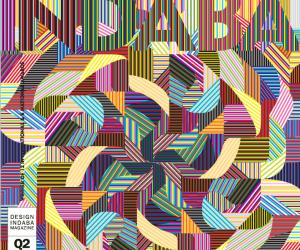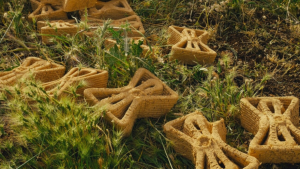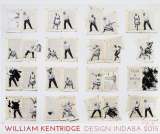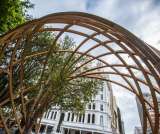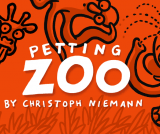Part of the Project
First Published in
If you want a snapshot of what’s happening in South African design the Design Indaba Expo is a good place to start. When it made its debut in 2004, it constituted a display of about a dozen craft-based pieces in the foyer of Cape Town’s Artscape Opera House, where the Design Indaba was held in earlier incarnations. Now it has blossomed into a thriving emporium of ideas and artefacts building on the craft tradition, but bringing social relevance into the mix.
Though the organisers say it extends to architecture, furniture and advertising, the Design Indaba Expo is still largely craft based. And traditional crafts dominate still, with bowls, appliqué wall hangings, and wire and beadwork evident everywhere. But the themes in the often narrative pieces have changed over the years as South Africans use well-tried crafts as a vehicle for personal and political expressions. Social statements abound.
A personal favourite, beaded animals were again in abundance this year, courtesy of Monkeybiz and a host of other collectives that have enlisted help from women in the townships. This year the animals were joined by beaded wire footballers in anticipation of South Africa hosting the FIFA World Cup next year, not to mention “well endowed” beaded Little Traveller doll brooches created and sold in support of HIV/Aids victims.
But as the stories told by the artisans develop, so do the materials they use. Ceramic bowls with their distinctive glazed patterns are balanced now with artefacts made of recycled materials. Plastic bags collected and caught in a simple cotton mesh make a basic football, for example. Sustainability and reuse are constant themes.
There are also the finer crafts of jewellery and fashion. The jewellery uses indigenous precious metals and gems. In turn, the fashion displays a strong African beat in its use of fabrics and colour (such as Stoned Cherry) and urbanism in the use of slogans (like Sandhya Lalloo’s SIN T-shirts). The joy is that you can buy the stuff then and there, and the queue for the ATM machine within the hall shows how popular that is.
What lifts the Design Indaba Expo above the average design fair are the many interventions that bring fresh energy into the hall. There are the catwalk fashion shows, the live performances by South African acting and musical talents, and contests such as the Most Beautiful Object in South Africa award. The latter is voted by SMS, embracing technology in true South African style.
This year we were also treated to the travelling show SOUTH, created to promote South Africa’s creative talent. The exhibits could have been better displayed in the hall, but they amounted to more than an array of products. These were thoughtful pieces addressing issues such as HIV/Aids, note the blanket taking the HI virus as a decorative motif; reuse, such as the lampshade made of yellow plastic clothes pegs; and recycling, as in the driftwood table. The winning project, Spaza-De-Move-On by architect Doung Anwar Jahangeer, is a practical project with a social conscience. A fold-up shop on wheels, it was conceived to make life easier for street hawkers and bring dignity to their businesses.
But even more edifying for design followers was the Emerging Creatives section of the Design Indaba Expo. Here the variety the organisers claimed could be seen, and evidence of how far South African design has come since 2004. It was a taster for a future that looks assured. Exhibitors were showing design and, in some instances, design processes, across architecture, advertising, fashion and so on. This was not just about the craft and artefact that has so far characterised South African projects.
Craft will always be an important part of the mix. It has been used successfully to create work in the townships and raise cash for causes, while the traditions in it are an inherent influence on colour and technique used in more contemporary pieces. But design in the bigger sense looks set to take South Africa’s creativity beyond its roots on to a global stage.











